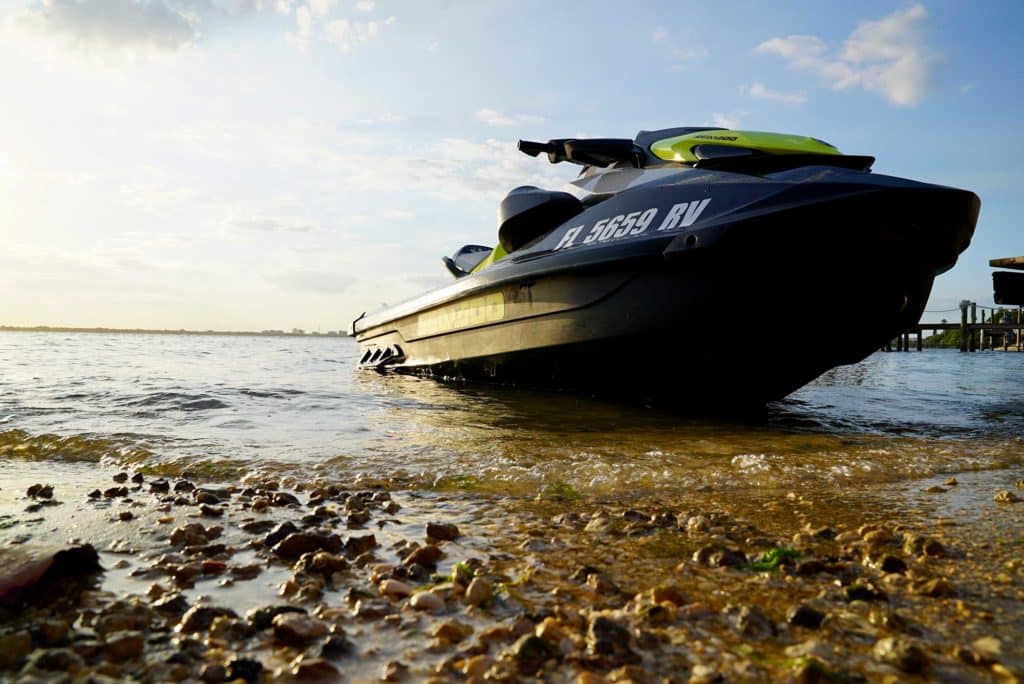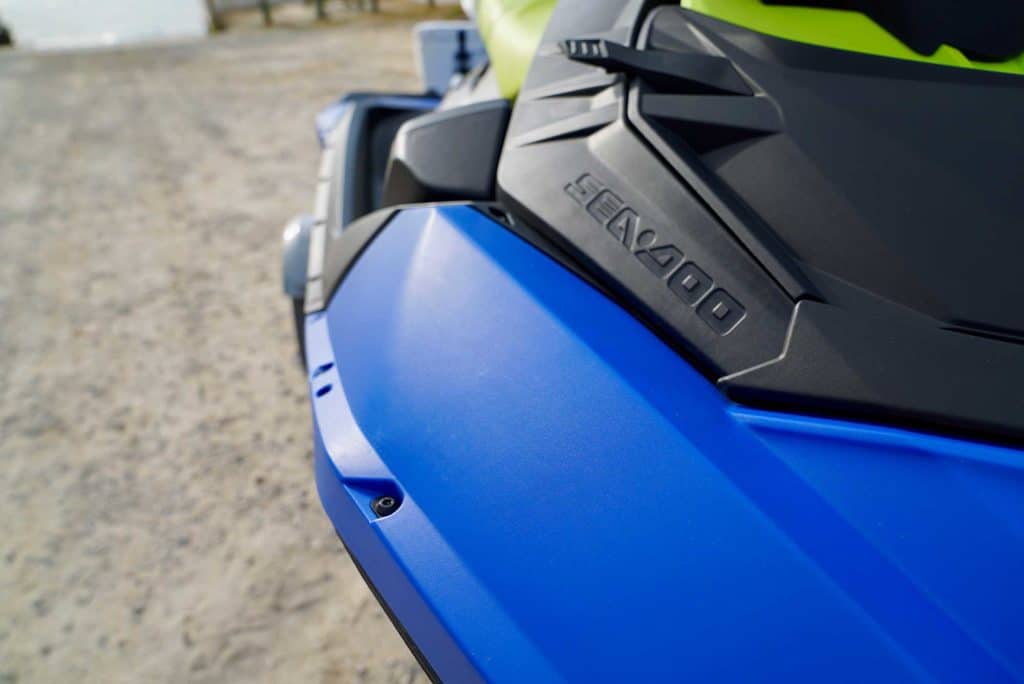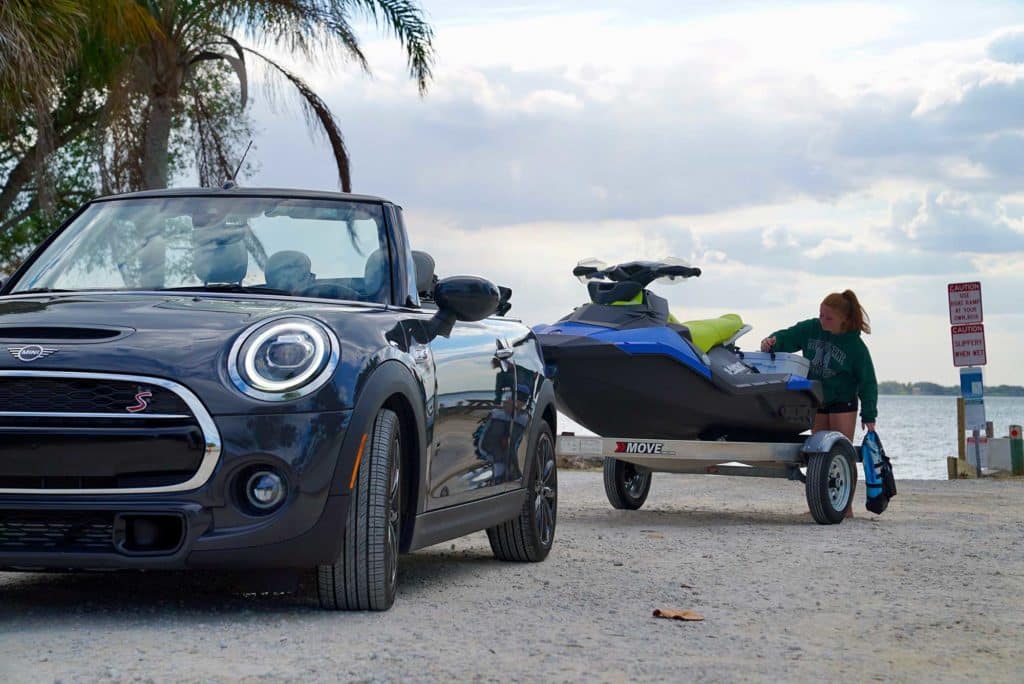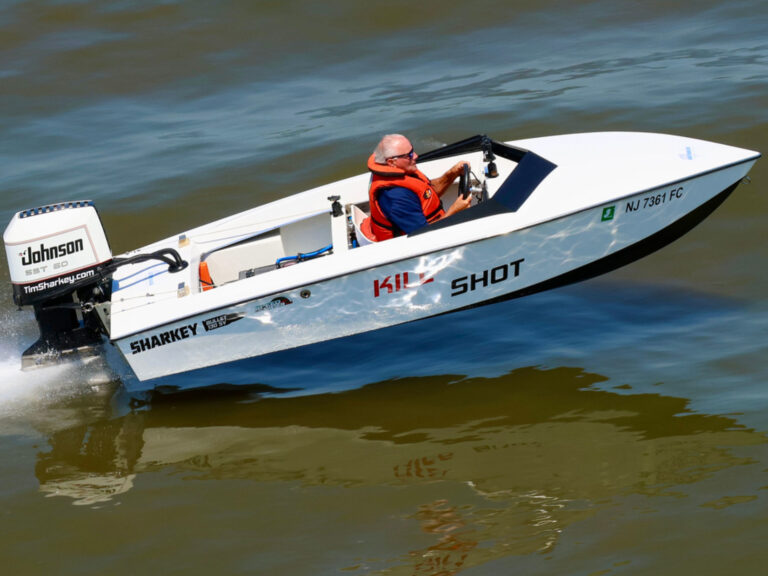
Sea-Doo has long been on the cutting edge of personal watercraft design, listening to customers’ needs to provide the best possible user experience. Design and engineering teams are continually studying and developing innovative construction methods and sourcing new materials that provide rugged durability while enhancing the performance and visual appeal of their watercraft.
Polytec, introduced on the groundbreaking SPARK, was the company’s first foray away from traditional fiberglass construction. A BRP-exclusive formula of polypropylene mixed with long-strand fiberglass, Polytec is not only more cost effective to produce but significantly lighter in weight than a comparable fiberglass-based build. That weight tips the scale in favor of performance in a personal watercraft’s all-important horsepower-to-weight ratio, but also pays practical dividends. The SPARK’s lighter weight makes it easier to tow, meaning owners won’t need a beefy tow vehicle just to get their craft to and from the water. That lighter weight is also welcome at the beach when pulling the bow of your craft on or off the shore. This latter scenario showcases Polytec’s scratch resistance. Sand and shells won’t visibly mar Polytec’s surface finish, unlike the scratches and gouges that mar gelcoated or painted hulls.

The SPARK’s Polytec deck panels also allow for customization. Cost-effective, individual body pieces can be mixed and matched to make your craft stand out from the crowd. Those same pieces can also be affordably replaced in the case of serious damage, much like replacing, rather than repairing, a damaged car fender.
The newest GTI models further display the material’s consumer benefits. Hulls are made from a second generation of the Polytec material that incorporates added strength and rigidity for these faster, larger models. Like with the SPARK, Polytec Gen 2 dramatically trims weight, resulting in craft that are 30-40 pounds lighter than previous year’s models. That difference is notable; in a head-to-head comparison, the GTI SE 170 accelerates to the 50 mph threshold 1.2 seconds faster than its predecessor.

GTI hulls also showcase the benefits of one-piece hull construction. Structural engineering elements — items like stringers and motor-mount bases — are an integral part of the one-piece hull. The result is not only a more durable product, but also one that feels more solid on the water, with no significant flex, noise, or unpredictable behavior. Smaller impacts, like bumping into a dock or object below the surface, won’t result in the cracking and splintering common to traditional fiberglass. Minor damage can easily be repaired with a Sea-Doo developed Polytec welding process. In the unlikely event of significant damage, the bolted-together seam between deck and hull allows for something impossible with a glued hull-deck joint. The hull can actually be replaced, keeping your craft in like-new condition.
GTI decks even feature an innovative alternative to standard paint or gelcoat, a thermoformed, laminated acrylic finish that’s lighter than gelcoat, flexes to combat surface cracking, results in a higher-quality finish…and comes in a greater variety of premium colors.









